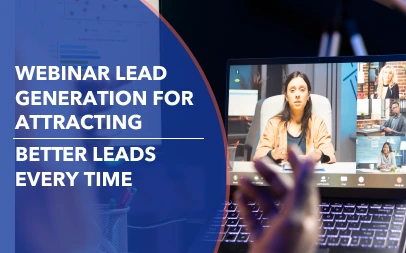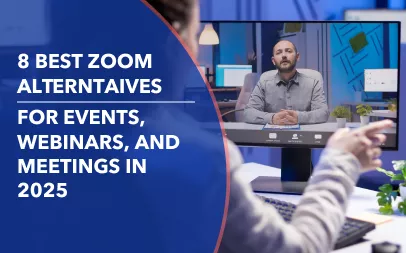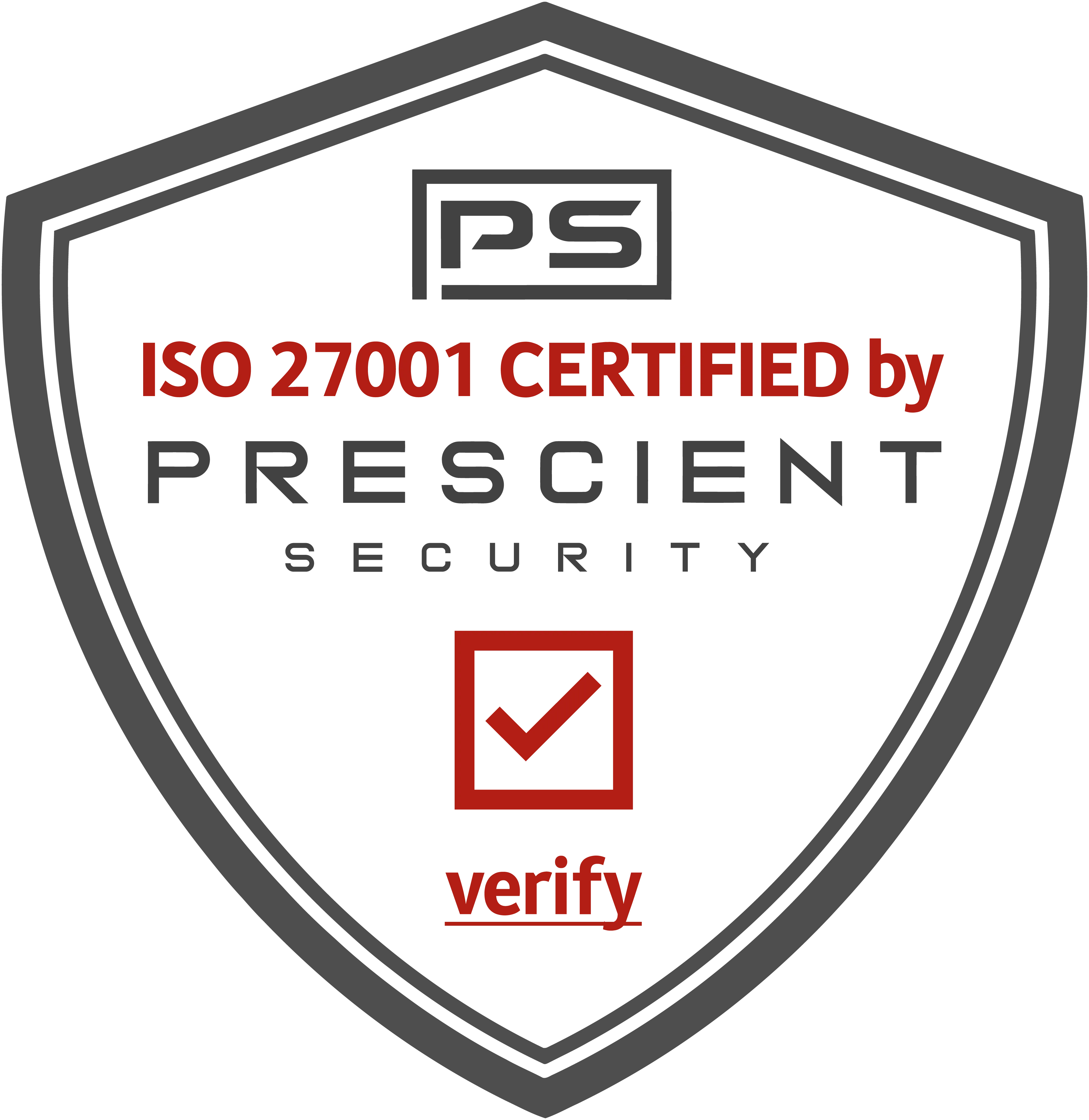
Webinars have become an increasingly popular way to connect with audiences and share valuable information. Whether you are promoting a product, conducting a training session, or hosting a virtual event, planning and executing a successful webinar requires careful preparation and attention to detail. In this article, we will explore some key tips and strategies to help you plan and execute a successful webinar.
Understanding the Basics of a Webinar
A webinar, short for web-based seminar, is a live online event that allows participants to interact with the presenter(s) and engage in real-time discussions. Webinars can be conducted through various platforms and typically include audio and visual presentations, as well as interactive elements such as polls and Q&A sessions.
Webinars have become increasingly popular in recent years due to their convenience and accessibility. Unlike traditional seminars or conferences that require physical attendance, webinars can be accessed from anywhere with an internet connection. This flexibility allows participants from different locations to join in and benefit from the knowledge and expertise shared during the event.
One of the key advantages of webinars is the ability to engage with the audience in real-time. Participants can ask questions, provide feedback, and actively participate in discussions, creating a dynamic and interactive learning environment. This level of engagement not only enhances the learning experience but also fosters a sense of community among the participants.
Defining the Purpose of Your Webinar
The first step in planning a successful webinar is to define its purpose. Are you aiming to educate your audience, generate leads, or provide training? By establishing a clear objective, you can tailor your content and engage your target audience effectively.
Educational webinars are designed to provide valuable information and insights on a specific topic. They aim to educate the audience and enhance their knowledge and understanding in a particular area. These webinars often feature subject matter experts who share their expertise and provide practical tips and advice.
On the other hand, webinars focused on lead generation aim to attract potential customers and build relationships with them. These webinars may offer exclusive content or special offers to incentivize participants to provide their contact information. By capturing leads through webinars, businesses can expand their customer base and nurture relationships with potential clients.
Training webinars, as the name suggests, are designed to provide training on a specific skill or topic. They are often used by organizations to train employees or by professionals to share their expertise with others. Training webinars can include demonstrations, step-by-step instructions, and interactive exercises to help participants acquire new skills or improve existing ones.
Identifying Your Target Audience
Next, identify your target audience. Understanding who your webinar is intended for will help you create relevant content and craft your messaging to resonate with them. Consider their interests, needs, and preferences as you plan your webinar.
For example, if your webinar is targeting professionals in the marketing industry, you may want to focus on topics such as digital marketing strategies, social media advertising, or content creation. On the other hand, if your target audience consists of small business owners, topics like business growth strategies, financial management, or customer retention may be more relevant.
By identifying your target audience, you can tailor your content to address their specific challenges and provide solutions that are meaningful to them. This personalized approach will not only attract more participants but also increase the likelihood of achieving your webinar's objectives.
Key Elements of a Successful Webinar
Now that you have a clear understanding of the basics, it's time to focus on the key elements that contribute to a successful webinar.
Hosting a webinar involves more than just presenting information to your audience. To truly captivate and engage your participants, you need to carefully consider various aspects of your webinar. Let's explore some of these key elements in detail.
Choosing the Right Platform
One of the crucial decisions you need to make is selecting the right platform for hosting your webinar. With the plethora of options available, it's important to choose a platform that aligns with your specific needs and goals.
Consider factors such as ease of use, scalability, and the ability to integrate with other tools you might be using. A user-friendly platform will ensure a smooth experience for both you and your attendees, while scalability will allow you to accommodate a growing audience. Integration capabilities will enable you to streamline your workflow and make the most of your existing tools.
Creating Engaging Content
Engaging content is essential for keeping your audience interested and promoting active participation. While having valuable information is important, how you present it can make all the difference.
Develop an outline or script that combines informative and interactive elements. Incorporate storytelling techniques, real-life examples, and practical tips to capture your audience's attention and provide value. By weaving a narrative and connecting with your participants on a personal level, you can create a memorable and impactful webinar experience.
Importance of Visual Aids in Webinars
In addition to compelling content, visual aids play a crucial role in webinars. Humans are visual learners, and incorporating relevant images, charts, and graphs can enhance understanding and retention of information.
Visuals can break up text-heavy slides and help maintain your participants' engagement. Use eye-catching images that support your message and convey information in a visually appealing way. Charts and graphs can simplify complex data and make it easier for your audience to grasp key concepts.
Remember to strike a balance between visuals and text, ensuring that your slides are not overwhelming or cluttered. Use visuals strategically to complement your content and reinforce your message.
By carefully considering these key elements - choosing the right platform, creating engaging content, and incorporating visual aids - you can elevate your webinar and deliver a memorable experience for your audience. Keep in mind that successful webinars require continuous improvement and adaptation, so don't be afraid to experiment and refine your approach over time.
Pre-Webinar Planning
Preparation is key when it comes to webinars. Pay attention to the following aspects to ensure a smooth and successful event.
Webinars have become an increasingly popular way to connect with audiences from all over the world. Whether you're hosting a training session, a product demonstration, or a thought leadership discussion, careful planning is essential to make the most out of this virtual event. In this guide, we will explore some important factors to consider before hosting your webinar.
Scheduling and Timing Considerations
Selecting the right date and time for your webinar is crucial to maximize attendance and engagement. Take into account the demographics and time zones of your target audience. If you have an international audience, consider scheduling the webinar at a time that is convenient for participants from different regions.
Furthermore, it's important to consider the work schedules of your audience. Avoid scheduling your webinar during their busiest hours or conflicting with other important events that might affect their availability. By carefully planning the timing, you can ensure that your target audience has the opportunity to attend and fully engage with your webinar.
Another aspect to consider is the duration of your webinar. Depending on the topic and the level of interaction you want to have with your audience, plan the length of your webinar accordingly. Allow enough time for presentations, discussions, and Q&A sessions. Remember, keeping your audience engaged throughout the entire webinar is crucial for its success.
Promotion and Marketing Strategies
Once you have a date and time set, it's time to promote your webinar and generate excitement among your target audience. Effective promotion and marketing strategies can significantly impact the attendance and overall success of your webinar.
Utilize your existing marketing channels to spread the word about your upcoming webinar. Leverage your email newsletters to reach out to your subscribers and inform them about the event. Craft compelling messaging that highlights the value participants will gain from attending your webinar. Clearly communicate the key takeaways and benefits they can expect.
In addition to email marketing, leverage the power of social media platforms to promote your webinar. Share teaser posts, create engaging visuals, and use relevant hashtags to increase the visibility of your event. Encourage your followers to share the information with their networks, expanding your reach even further.
Don't forget to optimize your website to promote the webinar. Create a dedicated landing page that provides all the necessary details, including the date, time, topic, and registration process. Make it easy for visitors to sign up and share the page with others who might be interested.
By implementing effective promotion and marketing strategies, you can attract a larger audience and ensure that your webinar reaches the right people who can benefit from the valuable content you will be sharing.
Conducting the Webinar
As the day of your webinar approaches, it's important to focus on conducting it effectively to keep your audience engaged and satisfied.
When it comes to conducting a successful webinar, there are several key factors to consider. From the role of the webinar host to engaging your audience, each aspect plays a crucial role in creating an interactive and informative experience for your attendees.
Role of a Webinar Host
The role of a webinar host is critical in ensuring a smooth flow and managing participant engagement. A skilled host should not only have a deep understanding of the topic being discussed but also possess excellent communication and facilitation skills.
As the host, your primary responsibility is to introduce the speakers and set the tone for the webinar. You should create a welcoming and inclusive atmosphere, making participants feel comfortable and engaged right from the start.
During the webinar, it is essential to facilitate discussions and encourage active participation. This can be done by asking thought-provoking questions, moderating panel discussions, and encouraging attendees to share their insights and experiences.
In addition to managing the content and flow of the webinar, the host should also be prepared to troubleshoot any technical issues that may arise. This includes ensuring that all participants have access to the necessary tools and resources, as well as addressing any concerns or questions they may have.
Engaging Your Audience During the Webinar
Keeping your attendees actively involved is crucial to the success of your webinar. By encouraging interaction and participation, you can create a dynamic and engaging experience for everyone involved.
One effective way to engage your audience is by utilizing features such as live chat, polls, and Q&A sessions. These tools allow you to gather feedback, gauge the level of understanding, and address any questions or concerns that may arise.
During the webinar, make an effort to engage with your audience on a personal level. This can be done by referring to their names and comments, acknowledging their contributions, and fostering a sense of community. By creating a welcoming and inclusive environment, you can encourage attendees to actively participate and share their thoughts and ideas.
Furthermore, incorporating multimedia elements such as videos, images, and interactive slides can help break up the content and make the webinar more visually appealing. This can help maintain participants' interest and prevent them from becoming disengaged.
Remember, the success of your webinar depends on the level of engagement and satisfaction of your audience. By implementing these strategies and techniques, you can conduct a webinar that is not only informative but also interactive and enjoyable for all participants.
Post-Webinar Actions
After the webinar concludes, your effort does not stop. Post-webinar actions are crucial for evaluating the success of your event and maintaining engagement.
But what exactly should you do after the webinar? Let's explore some important post-webinar actions that will help you make the most out of your event.
Gathering Feedback and Evaluating Success
One of the first things you should do after a webinar is to gather feedback from your participants. Sending out post-webinar surveys is an effective way to collect valuable insights. Ask your attendees about their overall experience, the quality of the content, and any suggestions they may have for improvement.
Once you have collected the feedback, it's time to analyze the data. Look for patterns and trends in the responses to identify areas of strength and areas that need enhancement. This evaluation will provide you with valuable information that can help you improve future webinars and better meet the needs of your audience.
Follow-up Strategies and Maintaining Engagement
Following up with your audience after the webinar is crucial for maintaining engagement and building relationships. There are several strategies you can implement to keep the conversation going.
One effective strategy is to share the recording of the webinar with your participants. This allows those who couldn't attend the live event to catch up on the content and ensures that those who attended can revisit the information at their own pace. Additionally, you can provide additional resources related to the webinar topic, such as articles, ebooks, or case studies, to further deepen your audience's understanding.
Another way to maintain engagement is by offering exclusive offers or discounts to your webinar attendees. This not only shows your appreciation for their participation but also incentivizes them to continue their engagement with your brand or organization.
Remember, the key is to nurture your newfound connections and build relationships that extend beyond the webinar itself. By keeping the conversation going and providing value even after the event, you can create a lasting impact on your audience.
Planning a successful webinar requires meticulous planning, engaging content, and effective execution. However, the pre-webinar and post-webinar actions are equally important in ensuring the overall success of your event.
By understanding the basics, focusing on key elements, and implementing pre and post-webinar strategies, you can create an impactful and memorable webinar experience for your audience.
Like what you see?
Inspired to take your webinars and virtual events to the next level? Unlock the full potential with Remo's cutting-edge platform Elevate your gatherings with Remo's dynamic features. Sign up today and embark on a journey of unforgettable connections and growth! Book a demo today!




























